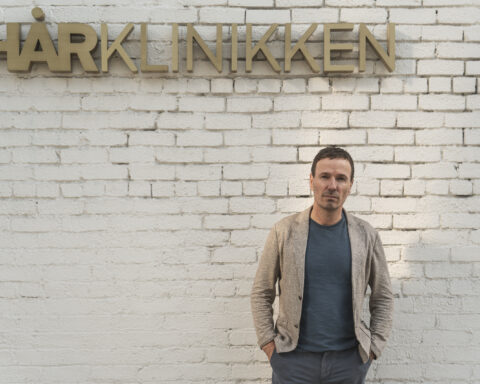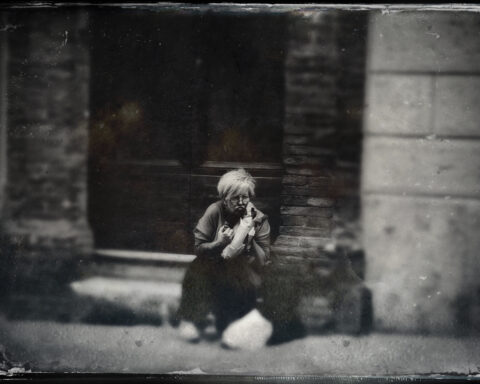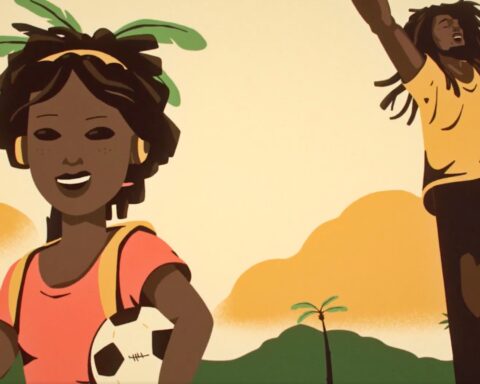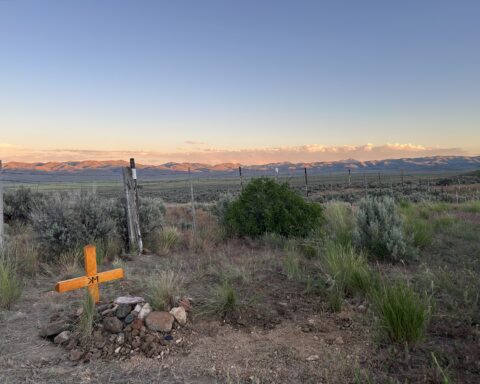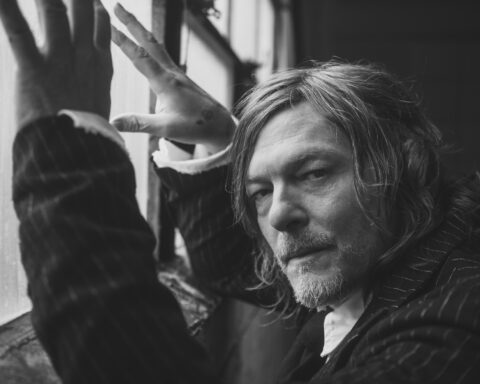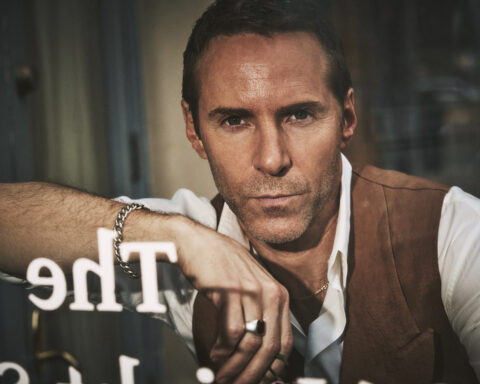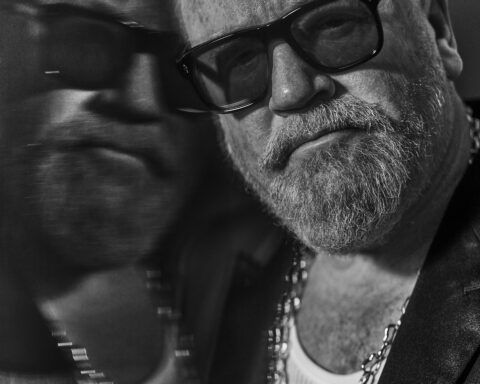According to some, the psychoactive brew ayahuasca sends its users on life-affirming trips to connect with their soul and cleanse them from deep-rooted trauma.
Or perhaps you’ve just heard the stories of excessive vomiting and diarrhea that rids participants of something rather less spiritual.
Whatever your take, ayahuasca use among Westerners is on the rise. And the ritual — which originates from ancient Amazonian tribes — is becoming a big, albeit controversial, business as people from around the world look for alternatives to traditional medicines, or just search for a new experience and perspective.
So what is it? How does it work? And is it the portal to enlightenment or just a whole world of s***?
As part of our WTF series to demystify concepts in the world of wellness, we speak to experts including Dennis McKenna, the first man to conduct a biomedical study on the effects of the drug that introduced it to many in the West, and ask: ‘What the f*** is ayahuasca?’

Soltara Healing Center Master Healer Silvia Marin Garcia
SO WHAT IS AYAHUASCA?
Ayahuasca is made by heating two plants in a brew, the leaves of Psychotria viridis and the stem of Banisteriopis caapi. Psychotria viridis contains the powerful psychedelic substance DMT, but taken alone, that chemical gets broken down rapidly by enzymes called monoamine oxidases (MAOs) in your liver and gastrointestinal tract. So it is mixed with Banisteriopis caapi, which has psychoactive effects of its own and contains MAO inhibitors which allows DMT to take full effect.
This combination has been taken for centuries in the Amazon region, with shamans using the drug to lead religious and spiritual ceremonies within their tribes.
In the Quechua language, ayahuasca translates to either “vine of the soul” or “vine of the dead.”
These two definitions carry rather different connotations, but their meaning may not be as far apart as they sound — with shamans believing the brew can free the spirit.
It was traditionally used by shamans to induce an altered state during which they believed they could look into the future, travel in spirit form, induce healing, remove spells, and cast spells on others.
But in recent years, its use among international soul searchers has boomed with Westerners attending ceremonies to drink the brew on home soil and on pilgrimages to Latin America. And it is increasingly being studied by scientists attempting to learn about its potential benefits and risks, and possible clinical uses in treating mental illness.

Ayahuasca is prepared in the Amazon // 📸: Wikimedia Commons
HOW TWO BROTHERS PIONEERED THE RESEARCH IN THE WEST
Brothers Dennis and Terence McKenna were among the first bring attention to the drug in the West as they started documenting their travels in South America, seeking out the psychedelic rituals of indigenous cultures in the 1970s.
Dennis went on to become one of the world’s leading researchers, lecturers and authors in the field of ethnopharmacology, studying the use of plant medicine by indigenous groups. And Terrence, who died in 2000, was a leading advocate of the benefits of psychedelic drugs.
Dennis first experienced and studied ayahuasca for his fieldwork as a University of British Columbia graduate student in 1981. Then in 1993, he conducted pioneering research on its use at a church of the Christian Spiritist religion UDV in Brazil, that sparked the popularization of the scientific study of the drug.
“My brother deserves a lot of credit, or blame, depending on how you want to look at it,” Dennis says.
“We first went to South America looking for exotic psychedelics in 1971. We weren’t looking for ayahuasca, that came later. Then in 1976, my brother and his wife at the time went to Peru looking for it. I went back to South America in 1981 as a graduate student to do my fieldwork about ayahuasca, and was able to do that in part because of the contacts they had made.
“Then in 1993, I helped organize a biomedical study of ayahuasca in Brazil with the UDV church. That was an important study because it was the first time that anybody had looked at ayahuasca from the standpoint of, what does it do, what’s the pharmacology, what’s the effect on people? And that was what put ayahuasca on the map as far as science was concerned.
“We did in depth, psychological profiles of the people and structured psychiatric life story interviews with our subjects.
“That’s when it really became clear that this had profound benefits for people. Because most of them told the same story, that they had joined the UDV at a time they were in crisis due to drug abuse or alcoholism. They were not in a good place.
“And usually they came to the UDV and then turned their life around. They’d have realizations about where they were headed if they didn’t change their ways. It was a profound lesson.
“Subsequently, in the 2000s and even until recently, I’ve been hosting ayahuasca retreats in South America. I’ve witnessed that it really is helpful to people who are struggling with life’s issues — either depression, or drug abuse, or trauma and PTSD. And, of course, consciousness and exploration of spiritual purpose.”

The ceremonial space at Soltara Healing Center
NOW FOR THE SCIENCE
While Dennis’ research into ayahuasca was the first of it’s kind, now several respected research centers are dedicated to the studying the potential benefits of psychedelics.
In recent years, the Food and Drug Administration has designated psilocybin, the active ingredient in ‘magic mushrooms’, as a potential “breakthrough therapy” for depression. This allows scientists to fast-track studies that could lead to psychedelics being used as recognized medicine.
Research released in November 2019 from the Center for Psychedelic Research, at Imperial College London, studied the brains of 13 participants who were given an injection of DMT to attempt to get a better understanding of how it works.
The study was the first to show how DMT changes our waking brain waves and compares its powerful effects to “dreaming while awake.”
They also found that the brain activity became more chaotic and less predictable, the opposite to what is seen in states of reduced consciousness, such as in deep sleep or under general anesthesia.
Lead author Christopher Timmermann says: “We saw an emergent rhythm that was present during the most intense part of the experience, suggesting an emerging order amidst the otherwise chaotic patterns of brain activity.
“From the altered brainwaves and participants’ reports, it’s clear these people are completely immersed in their experience — it’s like daydreaming only far more vivid and immersive, it’s like dreaming but with your eyes open.”
And Dr Robin Carhart-Harris, head of the Center for Psychedelic Research, says: “DMT is a particularly intriguing psychedelic. The visual vividness and depth of immersion produced by high-doses of the substance seems to be on a scale above what is reported with more widely studied psychedelics such as psilocybin or ‘magic mushrooms’.
“It’s hard to capture and communicate what it is like for people experiencing DMT but likening it to dreaming while awake or a near-death experience is useful.
“Our sense it that research with DMT may yield important insights into the relationship between brain activity and consciousness, and this small study is a first step along that road.”
And Dennis adds: “It’s oddly similar to dreams. There is a lot about the ayahuasca experience, more than other psychedelics, that is dream like.
“You see scenarios and stories unfold. And it’s interesting that the brain chemistry of dreams and the brain chemistry of ayahuasca are not that different.
“And of course indigenous people value dreams and recognize dreams as important learning opportunities, whether there are drugs involved or not.”

The Soltara Healing Center in Costa Rica
AYAHUASCA TOURISM
Over the last decade ayahuasca use — and tourism — has really hit the mainstream. Before Covid-19, thousands were flocking to more than 140 ayahuasca retreats in Latin America each year. And now many of those retreats are preparing to open their doors again when restrictions enforced by the health crisis loosen.
Dan Cleland is the founder and CEO of Soltara Healing Center in Costa Rica, which charges from $2,875 to $6,900 per person for week-long retreats and counts Dennis among their advisors.
In between the ayahuasca ceremonies, guests can enjoy ocean views, a sparkling swimming pool, yoga classes, meditation circles, fine cuisine and relax in luxury suites.
And Dan, who moved from Vancouver, Canada, to set up the ayahuasca retreat, says: “Westerners did discover this medicine around 50 years ago, but it didn’t really make it into the mainstream. Then in the last 10 years it has really exploded.
“I did my first ceremony in 2010, but it was very fringe, very counterculture. It was just viewed as this super intense, super powerful hallucinogen that makes you vomit and have crazy nightmarish visions.
“And that’s what a lot of people used to write and blog about: ‘What does all this mean? Do these crazy visions actually showed you the afterlife? Can you transcend the human condition?’
“When in actuality, the indigenous have been doing this for thousands of years and none of those things are true. It’s just a simple plant medicine that can have beneficial effects on the emotional, spiritual and physical body.
“Yes, you purge when you drink it, so that might involve vomiting and diarrhea. The medicine goes through the intestinal tract and does a lot of cleansing and detoxifying.
“On top of that, you have very powerful and profound visionary experiences, which can help people process traumas, experiences and memories — personal blockages that have perhaps been contaminating their lives or preventing them from living the way they want to.
“We have visitors from all walks of life, but at Soltara we find fewer of the 20-something, budget adventures and more of 30-something professionals who prefer a little more comfort.”
Soltara Healing Center partner with a veterans’ association called the Heroic Hearts Project, which connects military veterans with ayahuasca therapy to help them deal with war trauma.
The New York Times visited the retreat before the Covid-19 lockdown and joined seven veterans who hoped the plant medicine experience could help them heal the mental wounds of years of combat.
Rudy Gonsior, an American former Special Forces sniper who has avoided drugs his whole life, said on arriving at the retreat: “I have traveled across continents to come to the jungle to do psychedelics. I guess this is what might be considered a Hail Mary.”
And after his experience, he likened it to a “final surrender” that was grueling but restorative.
He explained: “You have so many experiences that run the gamut from absolute terror to pure joy. You realize there’s another layer of understanding there.”

Soltara Healing Center Founder Dan Cleland
THE RISE IN THE WESTERN WORLD
Soltara is one of the leading retreats offering ayahuasca ceremonies, and all their experienced ‘master healers’ are from the Amazon and have learned from the tradition of the Shipibo tribe.
But away from Soltara, many Westerners are now also facilitating ceremonies. Kat Courtney, from Las Vegas, Nevada, found the drug 15 years ago, as a 30-year-old alcoholic and bulimic. And after ten years training with a master ‘ayahuasquero’ she has been hosting ceremonies independently for five years and is the founder of Afterlife Coaching.
And she says: “I had survived suicide attempts and a bipolar diagnosis. Ayahuasca helped me to crack the code of self-love, and kickstart a profound journey of healing.
“I’ve watched ayahuasca help people heal from physical ailments including diabetes, chronic back pain and inflammation, kidney issues, and many more.
“I’ve also watched people with horrible trauma and anxiety come through and claim their right to be joyful and balanced. I especially love working with veterans who have PTSD. Ayahuasca is incredible for helping these folks experience their war traumas with more consciousness and distance.
“Taking Ayahuasca is an indescribable feeling. She is completely and utterly unpredictable. She can come on like a freight train and feel like the most intense experience of your life, or she can be soft and gentle.
“Sometimes the medicine is highly visual, sometimes full of insights and clarity, sometimes a confusing whirlwind of energy and emotion. Always, though, she is an expander of consciousness.”
But she adds: “There are undoubtedly risks with working with ayahuasca. Anything that has the power to awaken us can also traumatize us too. Healing is no joke, and ayahuasca is not a cure. It’s important to approach her as an ally, not a quick fix.”
Entrepreneur and self-help guru Tim Ferris, the author of ’The 4-Hour Workweek’, is also among those to have spoken of its benefits, and says: “It’s mind-boggling how much it can do in one or two nights.”
But he also suggests the popularization of the plant medicine comes at a price in places like San Francisco, where he lives. “I have to avoid people at parties because I don’t want to listen to their latest three-hour saga of kaleidoscopic colors,” he adds.

Incense and tobacco at a Soltara ceremony
THE RISKS
But there more serious risks, beyond turning people into drug-bores, that anyone considering exploring ayahuasca must consider.
Ayahuasca is illegal in the US. And the booming plant medicine tourism industry in Latin America — where it is legal in Peru and Brazil and unregulated in Costa Rica — has been described as “the wild west.”
It has been linked to the death of around a dozen tourists over the last decade. It has been reported to set off psychotic episodes for people with serious mental health conditions, like schizophrenia. And it is also dangerous to mix with other medications, including antidepressants.
And another dark side is instances of sexual assault taking place as charlatans posing as shamans take advantage of the impaired state of ceremony participants.
Harry Shapiro, director of drug information charity DrugWise, has warned of the risks and believes some of those who seek out the drug could be most vulnerable to its side effects.
“No doubt, some people will say they have benefited in some psychotherapeutic way from this experience,” he says.
“But I remain skeptical of any fast track to enlightenment and people can come seriously unstuck.
“This can happen because there is no proper supervision because the whole enterprise is just a tourist rip-off. Or you might argue that those most in search of ‘the way’ are least able psychologically to deal with the effects of a powerful drug like DMT.
“Maybe most people just want to try it out for the experience without any other agenda. Whatever, I would urge caution for anybody who is aware they suffer mental health problems. If you are anxious about what will happen, you are more likely to have a bad trip — so if you are going to do it — make sure you are in the company of an experienced user who can guide you through it.”
Soltara Healing Center have earned praise for their experienced and authentic healers from the Amazon, a rigorous intake process where potential participants are screened medically and psychologically, and also providing aftercare for their clients after the leave the jungle and return to their real world.
But not all retreats treat the drug — or the ceremony participants — with such care.
“It is problematic,” Dennis says. “One hand people go and they’re not thrill seeking, these people are sincere. They definitely either have issues that they hope the ayahuasca will help them resolve. Or they’re just curious about heir own consciousness and so on.
“And I’ve seen people have profound transformations and it’s improved their lives. But on the other hand not every place is comes up to the standards of Soltara. There there are a lot of dodgy places out there I wouldn’t send my worst enemies.
“Then on the other side, tourists come down and it’s disruptive to the cultures. So there are some ethical dilemmas there.
“And the third aspect is because there is so much interest in it, there’s a lot of pressure on the plants so they’re being over harvested.
“There’s a belief that you have to use the oldest plants or the best plants to make ayahuasca from. And those are wild plants and you go further and further into the field to find these things.
“So it’s very complicated. It’s not an unalloyed blessing.”



